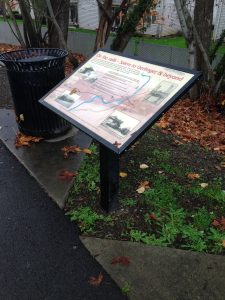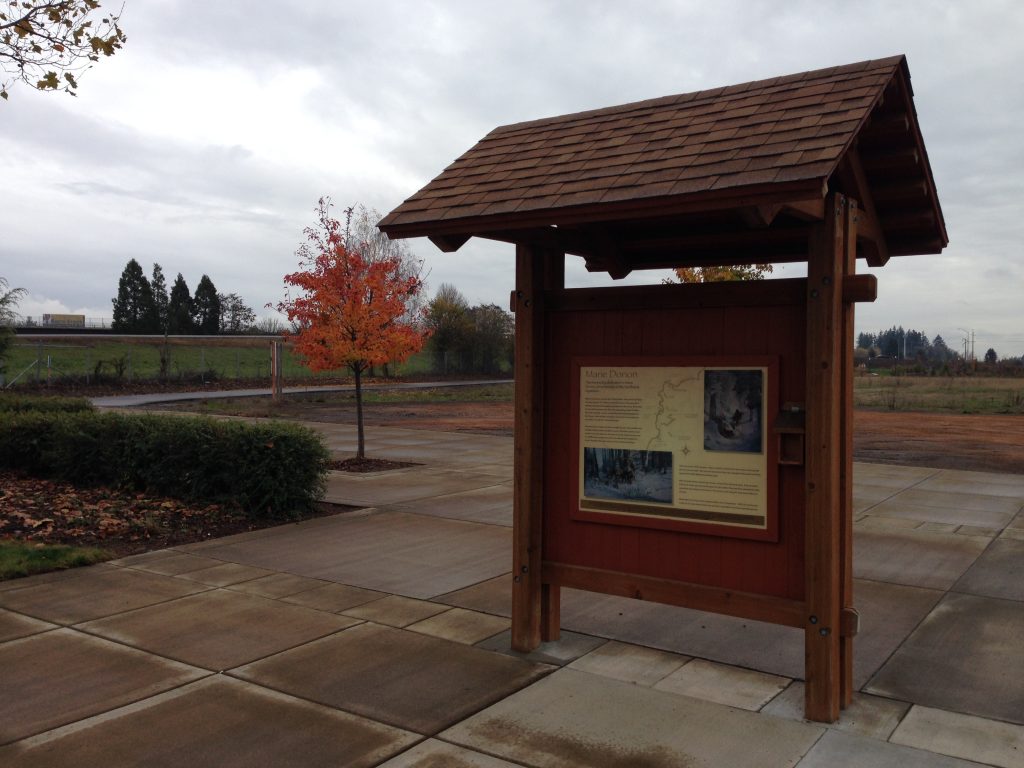Are you ready for interpretive signage?
Interpretation: The Art of Communication
 As little as fifteen years ago, interpretive signage was created the old-fashioned way: using screen printing – which could cost an arm and a leg, depending on how complex the production. But when the computer revolution zoomed through, large-scale digital printing made it possible to create beautiful, full-color interpretive signage for a fraction of the cost.
As little as fifteen years ago, interpretive signage was created the old-fashioned way: using screen printing – which could cost an arm and a leg, depending on how complex the production. But when the computer revolution zoomed through, large-scale digital printing made it possible to create beautiful, full-color interpretive signage for a fraction of the cost.
If you’re looking to start a project to design and create interpretive signage for a park, resort, garden, roadside historical marker or other location, it’s helpful to know how the process works – from the beginning concept through the design, fabrication and installation.
As with everything, the field of interpretation is becoming increasingly complex. Modern communication theories, advanced planning techniques, new or improved materials and a multitude of graphic design production techniques all add up to a complex decision when it is time to order a seemingly interpretive panel.
Most interpretive signage for exhibits progress in four steps:
- Planning
- Design
- Fabrication
- Installation
On smaller projects these four steps often tend to blend together, while on large projects each step can become a major element of its own.
Each of these steps is important. They are also closely related and one should not be done without full consideration of the others.
1. PLANNING
 The first step is to develop a good plan. Planning is the key to cost effective use of limited resources.
The first step is to develop a good plan. Planning is the key to cost effective use of limited resources.
You may be able to develop a plan using your staff or you might hire a professional planning consultant.
If you do hire a consultant make certain that you they are willing to listen to your input and work with you. The project goals should be yours – not theirs. It will be important that the project planner be able to work closely with the designer and fabricator to insure that the project intent is carried through to completion.
When preparing a plan it is important to consider parameters such as goals, audience expectations, messages, site conditions and budget constraints. A qualified consultant can assist with any or all of these and more.
A thorough interpretive prospectus should help identify your need for signing and suggest sign locations. It may also suggest other related opportunities for interpretation and thus, communication.
In any case, the result of the planning process should be a good understanding of what you want to do and why.
2. DESIGN
Design is the most complex of the four production steps. While remaining an extension of the planning process, the design must respond to budget constraints and visual elements. It must also consider all aspects of fabrication. To be cost effective the design must bring everything together in an attractive form which is practical to produce.
The principle elements which the design may manipulate are:
- Text
- Graphics
- Photos
The arrangement of these elements into a pleasing presentation will greatly enhance the communication process.
All three of these elements have various aspects which need to be considered.
TEXT
Language is one of our basic forms of communication. However, written text should be kept to a minimum for an interpretive sign.
- Text writing is complex
- Text must be researched, written, edited and proof-read. It must also be written at a level accessible to a wide range of visitor’s experience.
- Space for text is limited
- Text occupies a surprisingly large space when properly sized and laid out. Adequate letter size and spacing must be maintained to assure readability.
- Visitor interest in text is low
- Research has shown that when text blocks exceed 50 to 75 words, visitor involvement declines rapidly
- Effective text is important in communicating your message. However, be sure the text is written for your visitors
 GRAPHICS
GRAPHICS
Illustrations, maps, drawings, colors, fonts (typesets) and general aesthetics are all encompassed in the graphics development of your project. It is the combination of these elements which will attract and involve the visitor more than anything else.
Some of these elements such as illustrations and drawings may be developed to ‘camera ready’ form by your staff. More often, however, this requires a contractor who has graphic artists and illustrators on staff. Keep in mind that complex illustrations or drawings may be hard for the average visitor to grasp and will cost more to produce.
PHOTOS
“A picture is worth a thousand words.”
It used to be that putting photographs in an interpretive signage project meant sacrificing quality and durability. But today, digital technology allows a designer and fabricator to use the full spectrum of color graphics and photographs as they would in any other print medium. A good interpretive signage fabricator will guarantee their products for ten years minimum, regardless of if it has photographs or not.
3. FABRICATION
In order for your design to be cost effective, fabrication should be considered early. A multitude of options exist for materials and production techniques. Many specific combinations offer advantages in different situations. However, options encompass the majority of project needs. They are:
- High Pressure Polycarbonate (Rhino panels)
- Porcelain Enamel on Steel
- Photo Processed Aluminum
- High Pressure Laminates
No one of these is always best. Each offers pros and cons which you should discuss with your interpretive sign production organization.
When selecting an exhibit contractor be certain that they work with all available materials and techniques. A contractor who ‘sells’ only one product may not choose to consider all the options, thus depriving your project of numerous alternatives.
A qualified contractor should be willing to discuss your project in detail and recommend a combination of materials and techniques best suited to your specific needs.
4. INSTALLATION
Depending on your project scope, installation may be simple or complex.
Many times it is not cost effective to hire a consultant to travel a great distance to install a relatively small project. The travel costs might outweigh the actual installation costs.
As a project becomes larger, the installation can become quite complex and a professional contractor may be desirable. If you have any question as to who should install your project ask your exhibit contractor. They should be able to price installation separately. This may help you with your decision.
Carrying an interpretive sign project through the four processes can be a complex but enjoyable process. The reward will be successful communication with your visitors.
- Planning
- Design
- Fabrication
- Installation
A qualified contractor will be able to help you with any questions that arise along the way. The combination of your answers and the contractor’s experience should lead to the optimum design, the optimum fabrication and the optimum installation, all for the optimum price.
For information on how to proceed with ordering your outdoor interpretive panel, fill out a quote request form here, or give us a call at 800-654-6946.
